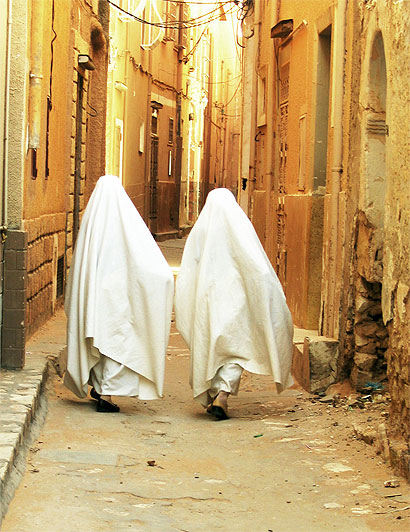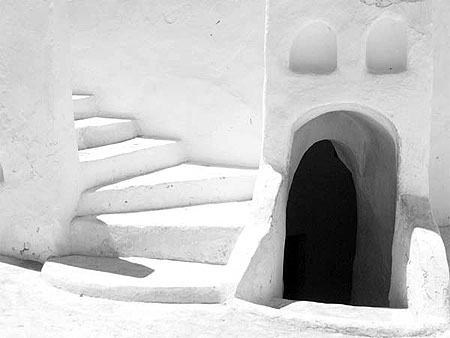Berbers are the tribes
Found in the Algerian Sahara
Their customs and traditions
with Islam religion
Ghardaia region
Geology
History
The Mozabites ("At Mzab") are a branch of a large Berber tribe, the Iznaten, which lived in large areas of middle southern Algeria. Many Tifinagh letters and symbols are engraved around the Mzab Valley.
After the Islamic conquest, the Mozabites became Muslims of the Mu'tazili school. After the fall of the Rostemid state, the Rostemid royal family with some of their citizens chose the Mzab Valley as their refuge. However, the Rostemids were Ibāḍī and sent a preacher (Abu Bakr an-Nafusi) who successfully converted the indigenous Mozabites.
France annexed the Mzab in 1882 as part of their North African colonies. Upon Algerian independence in 1962, the territory became part of Algeria.
Architecture
There are five qsur "walled villages" (ksour) located on rocky outcrops along the Wəd Mzab collectively known as the Pentapolis. They are Ghardaïa Tagherdayt, the principal settlement today; Beni Isguen At Isjen; Melika At Mlishet; Bounoura At Bunur; and El-Ateuf Tajnint. Adding the more recent settlements of Bérianne and El Guerara, the Mzab Heptapolis is completed.
The combination of the functional purism of the Ibāḍī faith with the oasian way of life led to a strict organization of land and space. Each citadel has a fortress-like mosque, whose minaret served as a watchtower. Houses of standard size and type were constructed in concentric circles around the mosque. The architecture of the M'zab settlements was designed for egalitarian communal living, with respect for family privacy.
In the summer, the Mzabites migrated to 'summer citadels' centred around palm grove oases. This is one of the major oasis groups of the Sahara Desert, and is bounded by arid country known as chebka, crossed by dry river beds.
The Mzab Valley was listed as a UNESCO World Heritage Site in 1982, as an intact example of traditional human habitat perfectly adapted to the environment.
Society
The insular nature of the Ibāḍiyya has preserved the area, and Ibāḍī Σezzaba continue to dominate the social life of the area. A federal council, Majlis Ammi Said, unites representatives of the seven settlements as well as Ouargla, an ancient town located 200 km South-East of the Mzab valley. This council forms a federative body for religious, social and, increasingly, cultural matters. This religious federal council represents an “Islamic type of government” unique today.
Numerous details of Ibāḍiyya social life are ruled by this Islamic government, such as the weight of gold given as a dowry to a woman (maximum 60 grams) to the length of wedding celebrations (three days). The council makes decisions on details such as dowries, celebrations, dress. It used to impose punishments including exile, and a form of tabriyya "quarantine", where the offender may not interact with his fellow citizens. However, with economic, social and political integration to Algeria, these sanctions are less effective, and tend to have more impact on women.
The local language of the Mzab is Tumzabt, a branch of the Zenati group of Berber languages.




thanks great post!
ReplyDelete